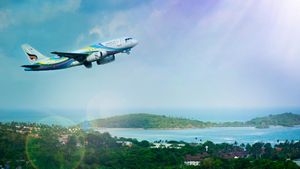After nearly five years of strict isolation due to COVID-19, North Korea has announced plans to reopen its borders for international tourism this December. This decision is particularly noteworthy as it signals the country's tentative return to normalcy post-pandemic, allowing foreign visitors to once again experience its unique cultural and historical offerings.
Tour operators are eager to kickstart the tourism process, with Koryo Tours being one of the first agencies to announce restructured travel packages. According to the Beijing-based company, they are thrilled to reinstate North Korean tourism and have confirmed initial tours will be primarily centered around the city of Samjiyon.
Samjiyon, known for its breathtaking winter landscapes, has been chosen as the first stop for tourists. Previously, the city gained some attention during the British documentary series "Michael Palin in North Korea," showcasing its potential as a tourist destination.
This reopening marks a significant shift as North Korea commenced easing its stringent border restrictions around mid-2023. Under these policies, the nation faced severe challenges, including shortages of goods and worsening food scarcity, aggravated by international sanctions imposed over the years.
Notably, citizens from South Korea and the United States remain barred from visiting the reclusive state. Koryo Tours has stated tourists from virtually all other countries will be allowed, but U.S. travelers face additional hurdles due to current governmental restrictions against travel to North Korea.
The U.S. State Department maintains its travel advisory for North Korea, classifying it as “level four: do not travel.” The risks related to potential arrest or long-term detention are cited as compelling reasons for this advisory.
The decision to reopen tourism appears to be driven not only by the desire for economic recovery but also by potential political strategies as North Korea seeks to project openness to the world. With tourism previously accounting for hundreds of millions of dollars annually, the availability of foreign tourists could provide the financial boost the country desperately needs.
Interestingly, prior to the pandemic restrictions, tourism encompassed visits to notable historical sites, military parades, and interactions with locals trained to guide tourists. Such curated experiences served to highlight North Korea’s achievements and culture from the country’s perspective.
Observing the challenges North Korea faced during its extended isolation, including natural disasters and food crises, it remains uncertain how the government will handle health protocols for incoming tourists. Striking the right balance between reviving the economy and ensuring public health safety will be critical as North Korea moves forward.
Tourism experts express optimism, believing this reopening could provide valuable insights for the outside world and generate necessary revenue for North Korea. With travel agencies ramping up their marketing toward potential visitors, there is clearly renewed interest.
Culturally, North Korea offers experiences unlike any other destination, blending historical significance with the intrigue of often-misunderstood societal narratives. Tourists are hoping for more authentic interactions beyond the customary staged displays, seeking to glimpse the daily lives of North Korean residents.
The tourism revival could lead to positive changes, as increased exposure to the international community might soften perceptions and promote dialogue. It will be interesting to see how the North interprets and adapts to this newfound openness.
Throughout December, eyes will undoubtedly be on North Korea as international tourists start arriving. Stakeholders are closely observing whether this reopening is merely symbolic or signals the onset of genuine global engagement.
Overall, the return of international tourism to North Korea could pave the way for broader international dialogue, fostering transparency between the isolated state and the global community. History has shown these types of openings can sometimes lead to significant changes over time.



